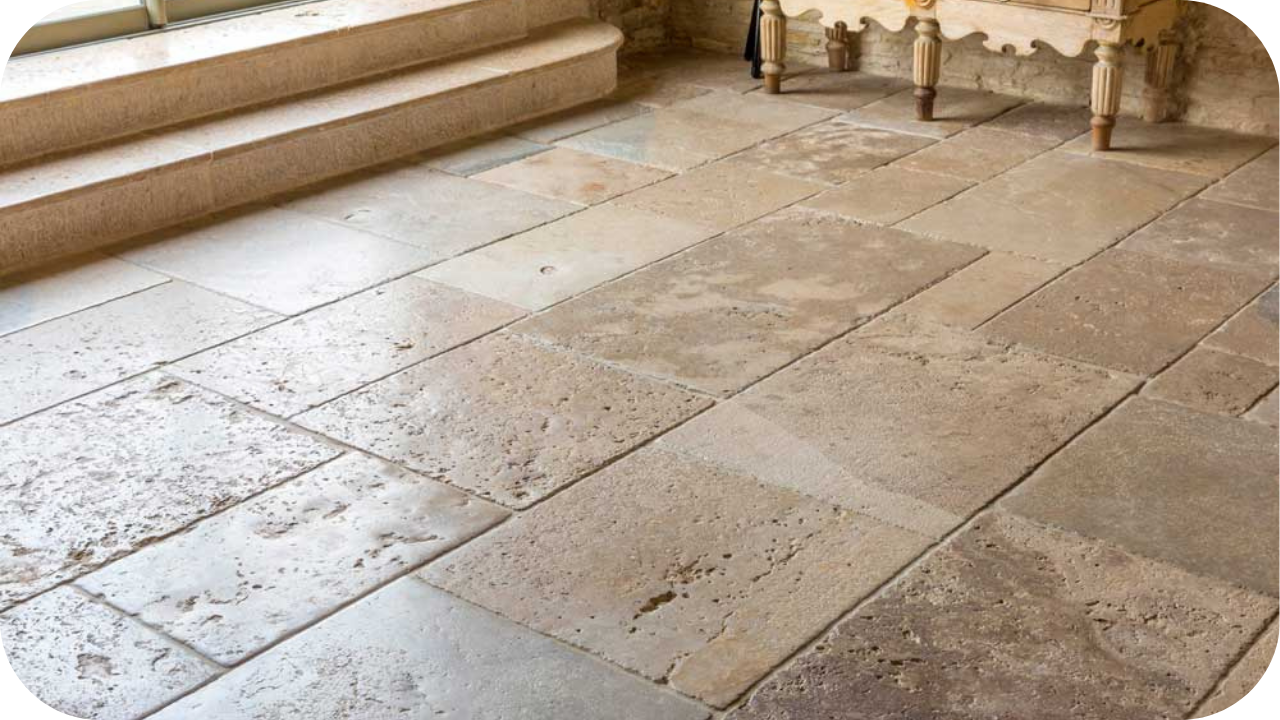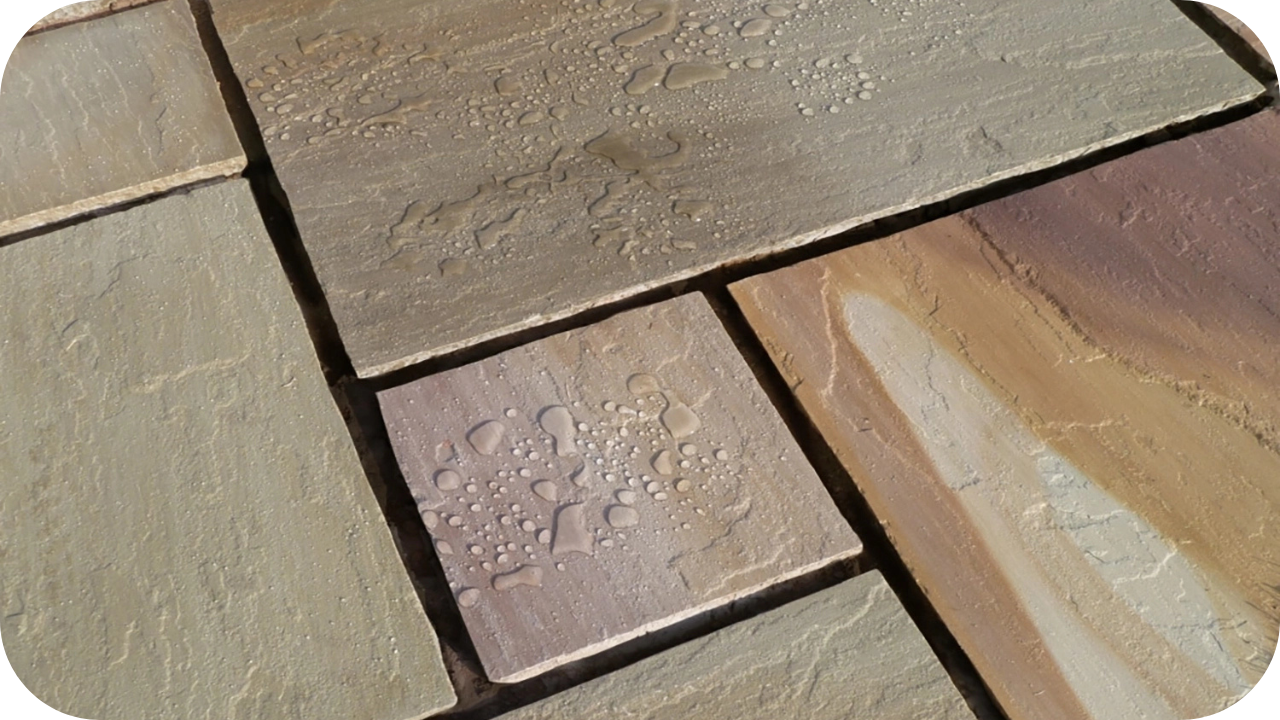
Choosing the right stone paving is daunting due to the myriad of materials and styles available.
Make the wrong choice, and you risk paving that fades or cracks, leading to costly replacements.
This article guides you through selecting a durable, aesthetically pleasing stone that complements your outdoor space perfectly.
Assessing Your Stone Paving Needs
Assessing your stone paving needs effectively involves carefully considering several critical aspects to ensure the choice of material suits both functionality and aesthetics.
- Purpose of the Paved Area: Identify the function; driveways require durable materials like granite or basalt for high traffic, while decorative stones like sandstone or limestone are ideal for patios and garden paths.
- Climate Considerations: Choose appropriate stones for your climate; use frost-resistant granite in areas with severe weather and de-icing needs. For sunny areas, select light-coloured stones that reflect heat and resist UV degradation.
- Maintenance Needs: Opt for materials that suit your maintenance willingness. Quartzite is low maintenance and durable, while softer stones like marble need regular sealing to prevent stains and wear.
- Aesthetic Harmony: Match the stone’s colour, texture, and finish with your home’s exterior to ensure visual continuity. Available in various hues and textures, stones can range from sleek, modern finishes to traditional, rustic appearances to suit different architectural styles.
Understanding Paving Stone Types
Understanding the various types of paving stones is crucial for making an informed decision that aligns with your aesthetic preferences and functional requirements. Here are the main categories:
- Natural Stone: This category includes granite, limestone, sandstone, and slate, each offering unique patterns and durability. Granite is highly durable and available in various colours, making it suitable for high-traffic areas. Limestone provides a more uniform appearance but is softer and requires more maintenance. Sandstone offers a range of colour variations and is relatively easy to work with, while slate is valued for its natural grip and distinct colour layering.
- Concrete Pavers: These are manufactured to mimic the appearance of natural stone but at a lower cost. Concrete pavers are versatile in colour and shape but may fade over time and require sealing to maintain their appearance.
- Brick Pavers: Made from clay, brick pavers offer a traditional look that can blend seamlessly with older or historic properties. They are durable but can vary in colour and finish due to the firing process.
- Composite Pavers: These are made from recycled plastic and rubber, making them an eco-friendly option. They are lightweight and easy to install, available in various colours and styles, and often used in places where drainage and sustainability are concerns.
Evaluating Durability and Maintenance of Paving Stones
Durability
The longevity of paving stones is influenced by their ability to withstand traffic, weather conditions, and general wear. Granite and basalt are top choices for high-traffic areas due to their hardness and resistance to abrasion.
Sandstone, while durable, is more porous and may require additional sealing in wet climates to prevent water absorption and weathering. Slate, known for its natural split layers, offers good grip and durability but can be brittle in thinner cuts.
Maintenance
Maintenance needs vary significantly between stone types. Natural stones like limestone and sandstone may require regular sealing to enhance their stain resistance and prevent weather damage.
Conversely, manufactured options like concrete pavers often need sealing to retain their colour and minimize wear from exposure. Brick pavers generally require less maintenance, only occasional cleaning and sealing to preserve their rich colour.
Considering Installation Factors for Paving Stones
Considering installation factors is critical when choosing paving stones, as these affect both the appearance and longevity of your paved area. Here are essential elements to consider:
- Subbase Preparation: A properly prepared subbase is fundamental to prevent paving from shifting or sinking. Typically, this involves laying a layer of compacted gravel and sand, which provides a stable, level base for the stones. The depth and material of the subbase might vary depending on soil type and drainage needs.
- Drainage: Effective drainage is crucial to avoid water accumulation that can lead to structural damage or surface wear. Ensure the installation plan includes a slight slope (typically a 1% grade) away from buildings and towards suitable drainage points. Incorporating a permeable paving system could benefit areas with heavy rainfall, allowing water to percolate through the joints between the stones and into the ground.
- Laying Technique: The method of laying the stones can impact both the aesthetic outcome and the pavement’s durability. Patterns such as herringbone or interlocking designs add visual interest and enhance the pavement’s strength and stability. Ensure the stones are evenly laid, and the joints between them are tightly spaced to minimize movement and weed growth.
- Edge Restraints: Installing edge restraints is key to preventing the pavers from drifting apart over time. Materials for edge restraints can range from flexible plastic or metal to more natural options like additional rows of bricks or mortared stone.
Environmental Impact of Paving Stones
The environmental impact of paving stones is crucial, particularly regarding sustainability and ecological effects. Here are the primary aspects to consider:
- Material Sourcing: Quarrying for natural stone can disrupt local ecosystems and cause soil erosion. Choosing locally sourced stones reduces transportation emissions and supports local economies.
- Manufacturing Process: Concrete and brick pavers require significant energy due to their production processes, which involve high temperatures. Selecting manufacturers that use renewable energy and recycled materials can mitigate these impacts.
- Permeability: Impermeable surfaces block natural water infiltration, leading to runoff and affecting local waterways. Permeable paving options allow water to pass through, reducing runoff and encouraging groundwater recharge.
- Durability and Maintenance: Durable materials decrease the need for frequent replacements, reducing long-term environmental impacts. Low-maintenance materials that require fewer chemical treatments also help preserve local air and water quality.
Local Regulations and Restrictions
When choosing the right stone paving in Australia, it’s essential to be aware of local regulations and restrictions, which can vary significantly between states and local councils.
Here are some key considerations:
- Planning Permissions: In some areas, especially in heritage-listed or environmentally sensitive zones, you may need planning permission before commencing any paving projects. This often involves submitting plans detailing the work’s type and scope.
- Water Runoff Regulations: Many Australian councils have strict regulations regarding stormwater management. These rules ensure that new paving does not exacerbate local flooding risks by altering natural water flow patterns. In some cases, permeable paving solutions may be required to promote water absorption into the ground.
- Building Codes: The Australian Building Codes Board (ABCB) sets out standards that include specifications for outdoor paving to ensure safety and accessibility. Compliance with these codes is mandatory to prevent issues like uneven surfaces, which could pose trip hazards.
- Environmental Considerations: Some localities may have specific regulations to protect the environment, such as limits on removing existing vegetation and requirements for using sustainable or recycled materials.
Personal Preferences and Style of Paving Stones
Personal preferences and style are pivotal in selecting the right paving stones, as they should harmonize with your home’s architectural style and lifestyle needs. Here’s how to align your choices effectively:
- Colour and Texture: Choose colours that complement or contrast beautifully with the exterior of your home and existing landscaping. Textures vary from smooth, polished surfaces ideal for modern aesthetics to rough, natural finishes that enhance rustic charm.
- Size and Shape: The size and shape of the paving stones can influence the perceived space and flow of your outdoor areas. Larger pavers tend to make a small space appear bigger, while smaller, intricate designs can add detail and interest to expansive areas.
- Pattern: Consider how the laying pattern will affect the area’s overall look. Straight lines offer a formal appearance, whereas irregular patterns can create a more organic, relaxed feel.
Conclusion: Making a Decision
Choosing the right stone paving requires a thoughtful balance of durability, maintenance, aesthetics, and installation specifics.
Ready to transform your outdoor space?
Start exploring your options today and pave the way to a beautifully enhanced exterior that meets all your style preferences.
More To Explore

French Provincial Look Using Stone Paving
Looking to create an elegant yet rustic outdoor space? The French Provincial look is the perfect combination of timeless charm and modern sophistication, and stone

How to Tell If Stone Is Porous or Not
When selecting stone for your home or project, knowing whether it’s porous can make a huge difference. Porosity affects how your stone absorbs water, stains,


